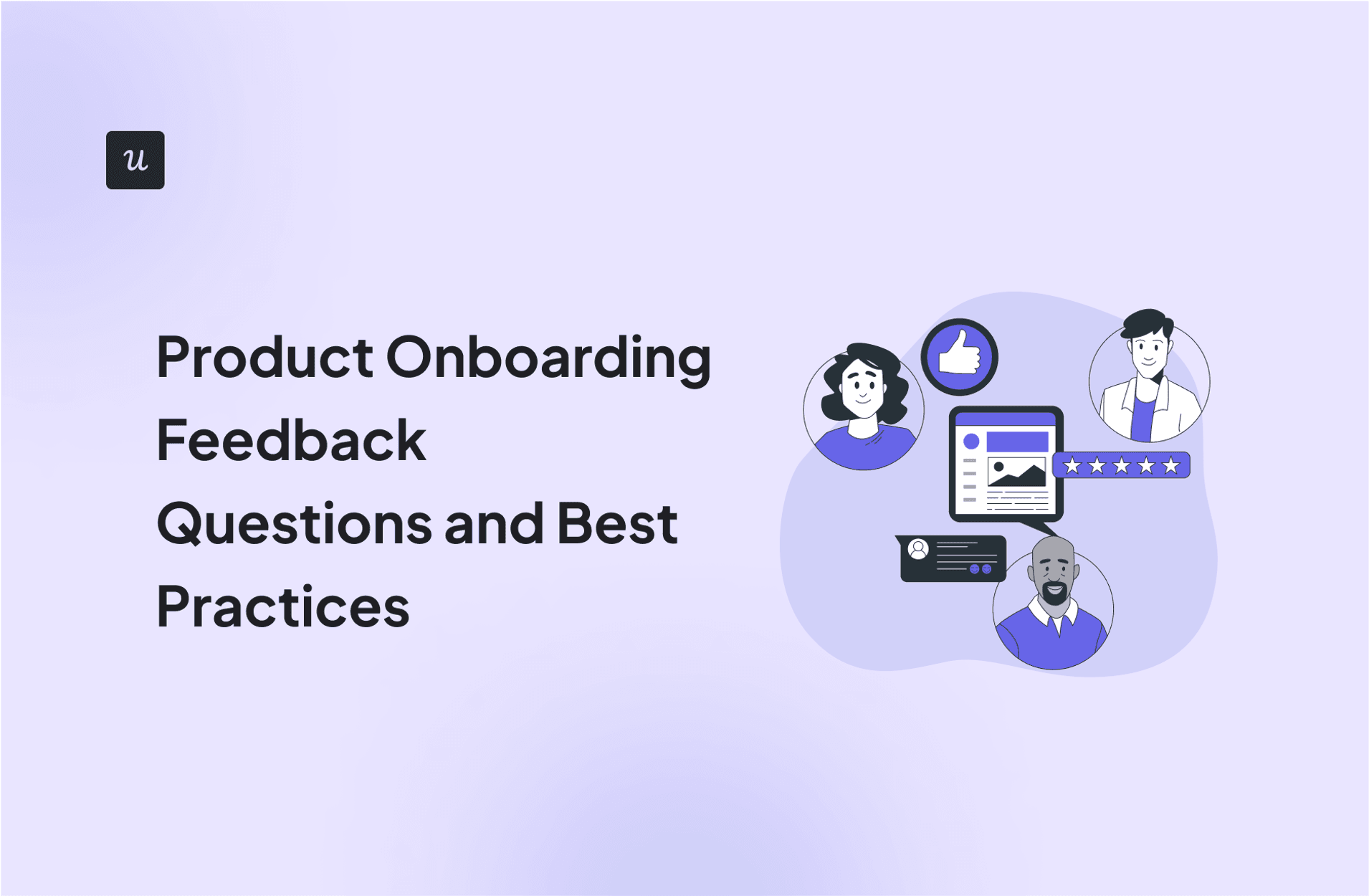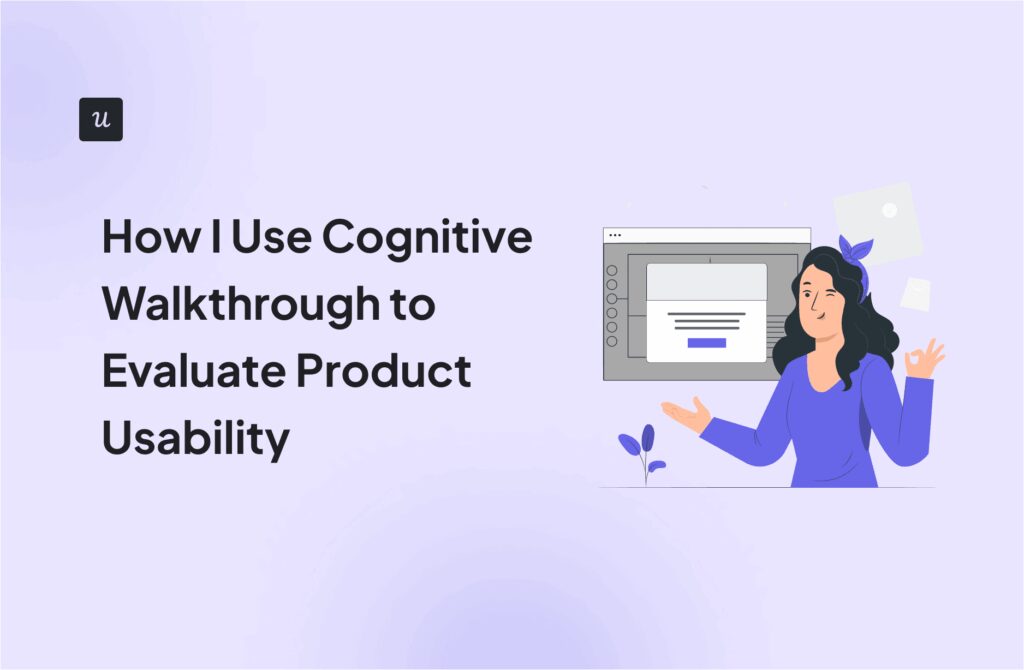
Try Userpilot Now
See Why 1,000+ Teams Choose Userpilot

What is product onboarding feedback?
Product onboarding feedback is insights collected from users during and/or after the onboarding process.
Feedback collection usually starts right after a user starts their trial and concludes upon the completion of their onboarding tasks.
Why should you collect product onboarding feedback?
There are many benefits to collecting product onboarding feedback.
Collecting feedback allows you to identify gaps in your onboarding strategy, improve your flows based on user insights, and ensure they are aligned with user expectations.
By virtue of improving onboarding and personalizing the experience, you’ll be able to boost customer satisfaction levels amongst your users. This, in turn, builds trust and reduces churn.
Product onboarding feedback collection best practices
Now that you know why it’s important to collect product onboarding feedback, let’s go over the best practices for doing so.
Use different methods for collecting customer feedback
Gathering feedback from a collection of different sources will help you get a more accurate look into the state of onboarding at your company.
After all, larger sample sizes and channel diversity ensure that every user gets the opportunity to voice their opinions of your onboarding process.
There are a few methods for collecting customer feedback that you can explore:
- Surveys. There are several types of surveys you can use across the customer journey to collect different insights such as Net Promoter Score, customer effort score, and customer satisfaction survey.
- Interviews. Interviews are a great way of collecting thorough and detailed feedback from a selected number.
- Analytics. Product analytics is a type of passive feedback that offers quantitative metrics rather than qualitative responses. For instance, you create user funnels and monitor completion to understand how effective your onboarding flow is to users.

Avoid bad customer onboarding survey questions
The key to avoiding survey bias is to steer clear of “bad questions” that nudge respondents towards a particular answer or make it difficult to interpret the question being asked.
Here are a few examples of questions that you shouldn’t ask your users:
- Leading questions. Leading questions are questions that either prompt or encourage a desired answer from respondents. Some leading questions may not imply the desired answer but influence the respondent’s thinking in order to achieve it.
- Loaded questions. Loaded questions use inflammatory assumptions that make the respondent more or less likely to agree with a certain stance.
- Double-barrelled questions. Double-barrelled questions are questions that ask about two or more topics but only allow a single response. An example would be “Do you like our product and are you willing to pay more for it?” where there are clearly two separate matters being touched upon.
- Biased questions. There are many types of bias in surveys, and various questions can fall under the umbrella of a “biased question.” However, some questions are inherently biased rather than merely biased as a result of the way they’ve been phrased.
- Questions with double negatives. Double negatives may not be intentionally biased but they do make it difficult for respondents to understand the question and answer appropriately — e.g. “Do you not dislike the onboarding experience?” rather than just “Did you like the onboarding experience?”
Complement quantitative data with qualitative feedback
While quantitative data is easier to gather and analyze, it’s crucial that you back these metrics with in-depth responses from users.
Asking open-ended questions will help you understand the thought process behind scalar responses and uncover actionable suggestions from your user base.

Trigger surveys contextually throughout the customer onboarding process
There’s an art and science to triggering user onboarding surveys in order to get the highest response rates while maintaining accuracy.
In general, triggering surveys after specific events will help you get the most accurate insights since the memory is still fresh while also yielding higher response rates.

These post-event surveys should be reserved for key milestones such as completing account creation, primary onboarding, or publishing their first project.
An example of this would be triggering a customer satisfaction survey right after a new user completes the product tour.
Distribute your customer onboarding surveys via different channels
Spreading your surveys across a multitude of channels will help you maximize the number of users that you’re able to reach. This avoids any skewed results that could result from smaller sample sizes — especially in user bases that contain a loud minority.
The three main channels for conducting onboarding surveys are in-app, SMS, and email:
- In-app. In-app surveys are the most reliable method for gathering feedback from your customers since they generate the highest response rates by virtue of existing within the product itself. However, you should still avoid becoming fully reliant on them as your sole feedback channel.
- SMS. While SMS marketing isn’t as common as it once was, it’s a reliable way to reach customers on their smartphones immediately after they hit an onboarding milestone or have an interaction with one of your representatives.
- Email. Email has been the most common delivery method for surveys over the past two decades. In order to make email surveys more contextually timed, you can use webhooks to send them out in response to specific in-app activity.

Use passive feedback collection methods
While gathering feedback is an essential step in optimizing your onboarding program, it’s important not to get in the way of new users. Passive feedback collection doesn’t disrupt the user experience and instead gives them the option to initiate a response at their own convenience.
As such, passive customer feedback should be used in addition to more active collection methods to strike a balance between extracting insights without hindering the advancement of new customers.
One example of passive feedback is Miro blending micro surveys into the interface.
Because the survey blends in naturally with the interface and users can rate their experience at any time, it ensures they always have the option to share their feedback without ever getting in the way of the user experience.

Another way of collecting passive feedback is incorporating always-on feedback widgets into the knowledge base. Although the feedback collected with this method might not be strictly onboarding-related, it’s still a way of showing users you are always open to feedback.

Implement the feedback and close the loop
You are not collecting feedback just for the sake of collecting it. It’s important to take feedback seriously and act on it to improve your product.
But that’s not how this all ends. You also need to deliberately communicate with the users and provide them closure on how their feedback was used.
Let’s say a user answered an onboarding survey that there is a bug in the product that prevents them from using one of the core features.
The right way of handling this is to solve the bug as soon as possible and send an in-app message to the user, notifying them that the requested changes have been implemented.

How to collect product onboarding feedback with Userpilot
One of the easiest ways to collect product onboarding feedback is using no-code platforms like Userpilot. The sections below will give you a brief walkthrough of how to collect product onboarding feedback with Userpilot!
Customize onboarding survey templates or create from scratch
Userpilot has a selection of 14 survey templates to choose from, including templates for CSAT surveys, CES surveys, and PMF surveys. Each template can be customized to your needs without writing a single line of code.
You can choose the colors, and fonts, add conditional logic, and even progress bars.

You’ll also be able to add radio buttons, text input fields, smiley face rating scales, and various other types of survey questions. These customization options give you as much flexibility as you need to create the surveys you envision.
Localize your customer onboarding survey to increase response rates
Because Userpilot has AI-powered content localization capabilities, you can automatically localize your surveys based on which language a particular user or segment speaks.
This makes surveys feel more relevant and eliminates the language barrier that may discourage certain users from responding.

Gather in-app feedback from different segments
By targeting your surveys to certain user segments, you’ll be able to gather highly specific feedback from the right set of users.
For instance, you could create a custom segment consisting exclusively of free trial users and then send them an in-app survey on their trial experience.

Tag qualitative survey responses to identify trends in the data
Because qualitative responses are harder to categorize than quantitative data, you should be actively identifying themes that correlate with particularly positive/negative feedback.
This will help you determine which issues are most urgent and clarify which problems you should prioritize solving first.
In Userpilot, you can do this by tagging NPS responses and identifying the most common ones among detractors.

Get insights into survey analytics with a comprehensive dashboard
Looking at the individual answers for each survey manually is an extremely time-consuming endeavor.
Instead, you can use our robust survey analytics to monitor answers, glance at recent responses, and see visual representations of the latest data-backed insights.

Conclusion
As you can see, product onboarding feedback is an invaluable resource, but you need to be cautious about when, where, and how you gather this data.
If you follow the best practices in this guide then you’ll already be one step closer to extracting actionable insights from your customers.
Want to start collecting in-app feedback code-free? Get your free Userpilot demo, and we’ll teach you how!
[/vc_column_text][/vc_column][/vc_row][/vc_section]






